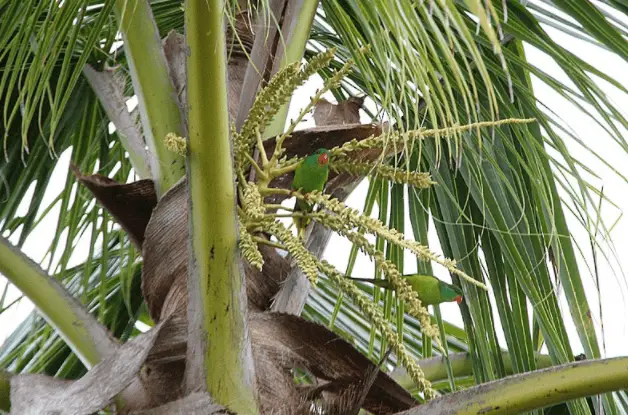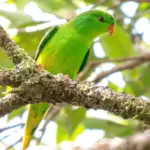
Red-chinned Lorikeet 17 cm; 31–40 g. Green, brighter below, with reddish-orange bill and red chin, orange-red legs; ear covertsslightly bluish with pale green streaks;
the underside of flight-feathers greyish brown with broad yellow mid-stripe; underside of tail greyish brown but red basally and broadly tipped yellow. Immature has less red on the chin and a shorter tail.
Systematics History
A member of the C. palmarum group (which see). Karkar I birds are sometimes separated as race krakari [sic]. Monotypic.
Subspecies
Monotypic.
Distribution
Bismarck Archipelago (New Britain, New Ireland, possibly New Hanover); also Karkar I, off NE coast of New Guinea.
Habitat
Canopy of the hill and montane forest above 500 m, although generally much commoner from 1000–1500 m, and on Karkar rare below 2000 m.
Movement

Red-chinned Lorikeet
Apparently sedentary.
Diet and Foraging
Red-chinned Lorikeet Noted feeding on inflorescences of a native palm; paste in stomachs apparently composed of nectar and macerated flowers.
Sounds and Vocal Behavior
The commonest vocalization is a high-pitched steeply up slurred “pseet!”, given both in flight and perched. When feeding utters a high-pitched twittering.
Breeding
 Red-chinned Lorikeet
Red-chinned Lorikeet
No clear information; evidence from Karkar suggests no activity May–Jun.
Conservation Status
Not globally threatened. CITES II. A BirdLife “restricted-range” species. Common to abundant.




















